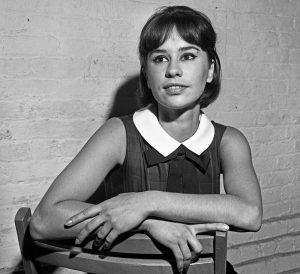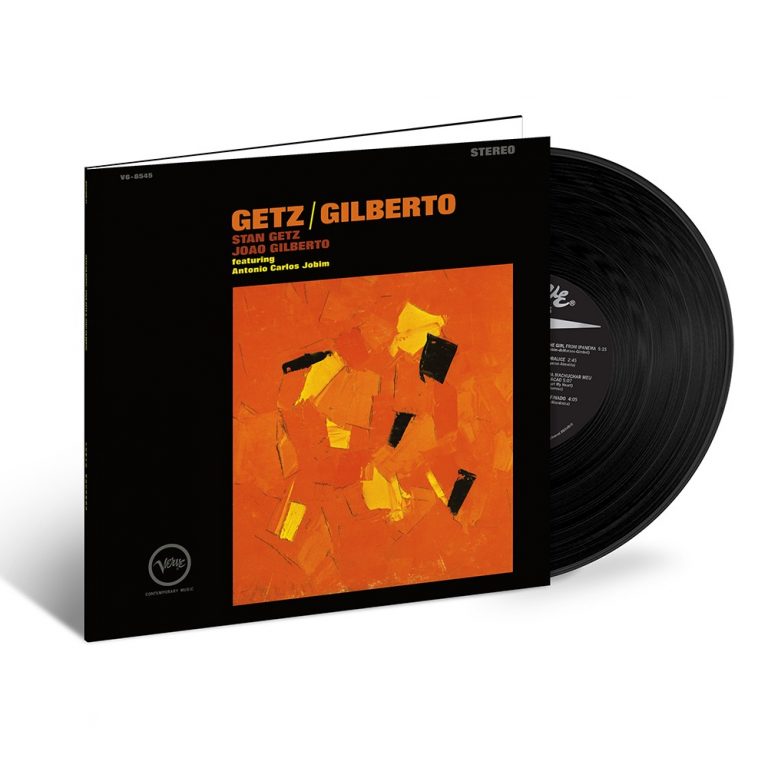Astrud Gilberto (1940-2023) wasn’t credited on the original version of “Girl From Ipanema,” which she recorded in 1964 as a duet with her then husband, bossa nova king João Gilberto, during the recording of the jazz classic “Getz/Gilberto.” A music biz ingénue with no previous recording experience, she received no royalties either.
But after her dreamy deadpan vocals were re-recorded as a solo single – producer Creed Taylor knew a potential smash when he smelled one – and the song went gangbusters, the Rio-raised, US-based Gilberto went on to claim her agency. At the time of her passing earlier this month her discography consisted of 16 studio albums and two live albums; there was a 1972 music DVD, inclusions on numerous compilations and collaborations with everyone from Japanese trombonist Shigeharu Mukai to George Michael.
a household name who wrested back control, who had jazz in her DNA, her star will always burn brightly
The Verve label was her home throughout the Sixties. She featured on 1964’s “Getz Au Go Go,” adding further sparkle to the American hornsman’s covers of tunes including the Tom Jobim-penned “Corcovado” and “One Note Samba.” But it was 1965’s “The Astrud Gilberto Album,” which has Jobim himself on guitar, that properly, respectfully, launched her catalogue. Albums followed in swift succession: “The Shadow of Your Smile.” “Look To The Rainbow.” “Beach Samba.” “Windy.” They mixed sensual, breathy Brazilian songs with interpretations of American classics from “Fly Me To The Moon” to Tim Hardin’s “Misty Roses.”

Her arrangers were skillfully cherry-picked: Eumar Deodato. Gil Evans. Claus Ogerman. In 1969 she released both her Bacharach-esque ‘fireplace album’ “I Haven’t Got Anything Better To Do” and the poppy, groovy “Holiday,” which has just the one Portuguese-language track. Two years later she teamed with saxophonist Stanley Turrentine for “Gilberto With Turrentine,” aided by bassist Ron Carter, percussionist Airto Moreira and a clutch of golden-fingered flautists, underlining her life-long passion for jazz’s major players. She started scatting, beautifully.
Her tenth 1972 studio album “Now” has a line-up including Billy Cobham on drums and Mike Longo on keys. It also features four songs written by Gilberto, keen to prove her chops: “Zigy Zigy Za” has a jaunty Tropicalismo vibe. But “Take It Easy My Brother Charlie,” a co-write with Jorge Ben, is the stand-out. In 1977 came “That Girl From Ipanema,” the album that was Gilberto’s personal favourite, largely because she duets with her idol Chet Baker on “Far Away,” for which she wrote the melody (the record also sports a disco version, a sign of the times, of “The Girl From Ipanema”).
In the early Eighties Gilberto formed a group that included her son Marcelo on bass, and toured hard internationally. She didn’t record again until 1987, with “Astrud Gilberto Plus the James Last Orchestra,” a jazz-pop delight that swings from Ellington & Co’s “Caravan” to her own “Champagne & Caviar.” Huge in Japan (she recorded songs in Japanese as well as in Spanish, Italian, French, German, English and Portugese), she released “Live in New York” (1996) and “Temperance” (1997), which features her son Gregory Lasorsa on guitar, in the Asian territories only.
In 2002 came “Jungle,” her final studio album, which she produced. Ten of 12 wildly varied tracks were hers: the funky “Rebola Bola”. The rhythmic Afro-Cuban/Afro-Brazilian dance tune “É Só Mi Pedir.” The sensual ballad “Dancing”. Gilberto’s subsequent announcement that she was taking indefinite time off from public performances turned out to apply to her recording career as well. No matter: a household name who wrested back control, who had jazz in her DNA, her star will always burn brightly.
Jane Cornwell is an Australian-born, London-based writer on arts, travel and music for publications and platforms in the UK and Australia, including Songlines and Jazzwise. She’s the former jazz critic of the London Evening Standard.
Header image: William PoPsie Randolph/Michael Ochs Archives/Getty



